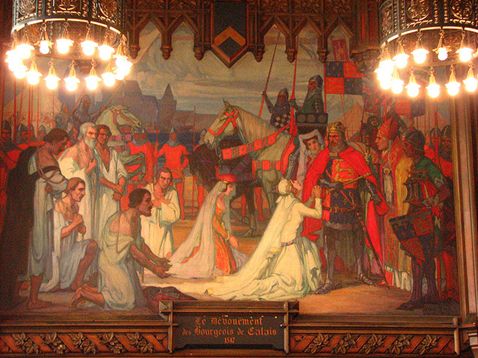|
Algakirk
Algarkirk ( ) is a village and civil parish in the Borough of Boston in Lincolnshire, England. It is situated south-south-west from Boston and near the A16 road. It has a population of 406, falling to 386 at the 2011 census. An alternative village spelling is 'Algakirk'. History Before the Roman conquest the area was home to the Coritani; after Roman departure it became part of the Anglo Saxon kingdom of Mercia. Algarkirk has been claimed to be named after Ælfgar, Earl of Mercia, a son of Lady Godiva;Cox, J. Charles (1916); ''Lincolnshire'' pp.42, 43; ''Methuen & Co. Ltd.'' he is reputedly buried in the graveyard of the parish church of St Peter and St Paul. The "kirk" element of the name comes from the Old English "circe" meaning church, which was later replaced by the Old Norse "kirk". The 9th-century church itself is Early English and Norman with a double-aisle transept and a font of Purbeck marble. Under the tower are kneeling brass effigies of Nicholas Robertson (d. 14 ... [...More Info...] [...Related Items...] OR: [Wikipedia] [Google] [Baidu] |
Boston (borough)
The Borough of Boston is a local government district with borough status in Lincolnshire, England. Its council is based in the town of Boston. The borough covers a wider area that includes villages such as Wyberton, Butterwick, Kirton-in-Holland, Langrick Bridge, Sutterton, Swineshead, Old Leake, Fosdyke, Kirton Holme and Hubberts Bridge. The borough borders East Lindsey to the north, North Kesteven to the west and South Holland to the south. To the east is The Wash. At the 2011 Census, the population of the borough was 64,637. History The borough was formed on 1 April 1974 by the merger of the former borough of Boston with Boston Rural District. Until 1974, Lincolnshire comprised three Parts, somewhat like the Ridings of Yorkshire. These were the Parts of Lindsey, Kesteven and Holland. In their final form, they were each, in effect, an administrative county. The 1974 changes divided the Parts of Holland into two districts; the Borough of Boston is the northern one. ... [...More Info...] [...Related Items...] OR: [Wikipedia] [Google] [Baidu] |
Old Norse
Old Norse, Old Nordic, or Old Scandinavian, is a stage of development of North Germanic languages, North Germanic dialects before their final divergence into separate Nordic languages. Old Norse was spoken by inhabitants of Scandinavia and their Viking expansion, overseas settlements and chronologically coincides with the Viking Age, the Christianization of Scandinavia and the consolidation of Scandinavian kingdoms from about the 7th to the 15th centuries. The Proto-Norse language developed into Old Norse by the 8th century, and Old Norse began to develop into the modern North Germanic languages in the mid-to-late 14th century, ending the language phase known as Old Norse. These dates, however, are not absolute, since written Old Norse is found well into the 15th century. Old Norse was divided into three dialects: Old West Norse, ''Old West Norse'' or ''Old West Nordic'' (often referred to as ''Old Norse''), Old East Norse, ''Old East Norse'' or ''Old East Nordic'', and ''Ol ... [...More Info...] [...Related Items...] OR: [Wikipedia] [Google] [Baidu] |
Holland, Lincolnshire
The Parts of Holland is a historical division of Lincolnshire, England, encompassing the south-east of the county. The name is still recognised locally and survives in the district of South Holland. Administration Parts of Holland was one of the three medieval divisions, called 'Parts', of Lincolnshire (the other two being Lindsey and Kesteven) which had long had separate county administrations (quarter sessions). Under the Local Government Act 1888 it obtained a county council, which it retained until 1974. At that point the three county councils were abolished and Lincolnshire (minus the northern part of Lindsey, which formed part of Humberside) had a single county council for the first time. Before the changes of 1888, Holland had, since probably the tenth century, been divided into the three wapentakes of Elloe, Kirton and Skirbeck. Under the Local Government Act 1894, the administrative county of Holland was divided into rural districts and urban districts, with the ... [...More Info...] [...Related Items...] OR: [Wikipedia] [Google] [Baidu] |
Boston Rural District
Boston was a rural district in Holland, Lincolnshire from 1894 to 1974. It was formed from the Boston rural sanitary district by the Local Government Act 1894 and did not include the municipal borough of Boston. The part of Boston RSD which was in Lindsey formed the Sibsey Rural District. In 1974, under the Local Government Act 1972, it was merged with Boston in a new borough of Boston The Borough of Boston is a local government district with borough status in Lincolnshire, England. Its council is based in the town of Boston. The borough covers a wider area that includes villages such as Wyberton, Butterwick, Kirton-in-Holla .... References {{coord, 52.95, 0.00, dim:30000_region:GB, display=title Districts of England created by the Local Government Act 1894 Districts of England abolished by the Local Government Act 1972 Rural districts of the Parts of Holland ... [...More Info...] [...Related Items...] OR: [Wikipedia] [Google] [Baidu] |
Victorian Restoration
The Victorian restoration was the widespread and extensive refurbishment and rebuilding of Church of England churches and cathedrals that took place in England and Wales during the 19th-century reign of Queen Victoria. It was not the same process as is understood today by the term building restoration. Against a background of poorly maintained church buildings, a reaction against the Puritan ethic manifested in the Gothic Revival, and a shortage of churches where they were needed in cities, the Cambridge Camden Society and the Oxford Movement advocated a return to a more medieval attitude to churchgoing. The change was embraced by the Church of England which saw it as a means of reversing the decline in church attendance. The principle was to "restore" a church to how it might have looked during the " Decorated" style of architecture which existed between 1260 and 1360, and many famous architects such as George Gilbert Scott and Ewan Christian enthusiastically accepted c ... [...More Info...] [...Related Items...] OR: [Wikipedia] [Google] [Baidu] |
Clerestorey
In architecture, a clerestory ( ; , also clearstory, clearstorey, or overstorey) is a high section of wall that contains windows above eye level. Its purpose is to admit light, fresh air, or both. Historically, ''clerestory'' denoted an upper level of a Roman basilica or of the nave of a Romanesque or Gothic church, the walls of which rise above the rooflines of the lower aisles and are pierced with windows. Similar structures have been used in transportation vehicles to provide additional lighting, ventilation, or headroom. History Ancient world The technology of the clerestory appears to originate in the temples of ancient Egypt. The term "clerestory" is applicable to Egyptian temples, where the lighting of the hall of columns was obtained over the stone roofs of the adjoining aisles, through gaps left in the vertical slabs of stone. Clerestory appeared in Egypt at least as early as the Amarna period. In the Minoan palaces of Crete such as Knossos, by contrast, ... [...More Info...] [...Related Items...] OR: [Wikipedia] [Google] [Baidu] |
Calais
Calais ( , , traditionally , ) is a port city in the Pas-de-Calais department, of which it is a subprefecture. Although Calais is by far the largest city in Pas-de-Calais, the department's prefecture is its third-largest city of Arras. The population of the city proper is 72,929; that of the urban area is 149,673 (2018).Comparateur de territoire: Aire d'attraction des villes 2020 de Calais (073), Commune de Calais (62193) INSEE Calais overlooks the , the narrowest point in the English ... [...More Info...] [...Related Items...] OR: [Wikipedia] [Google] [Baidu] |
Merchants Of The Staple
The Company of Merchants of the Staple of England, the Merchants of the Staple, also known as the Merchant Staplers, is an English company incorporated by Royal Charter in 1319 (and so the oldest mercantile corporation in England) dealing in wool, skins, lead and tin which controlled the export of wool to the continent during the late medieval period. The company of the staple may perhaps trace its ancestry back as far as 1282 or even further. Etymology In medieval Latin documents the common expression for ''staple'' is ''stabile emporium'', a staple (fixed) market, where such wares had to be brought; hence the assumed derivation of ''staple'' from ''stabile''. But the word is current in various allied meanings in the Germanic languages, as in O. Eng. ''stapol'', ''stapul'', a prop or post, from ''stapa'', a step; Dutch ''stapel'', a pile; Low Ger. ''stapel'', a heap, a warehouse; whence also O. Fr. ''estaple'', ''estape'' (N. Fr. ''étape''), a station, a stage, generally a town o ... [...More Info...] [...Related Items...] OR: [Wikipedia] [Google] [Baidu] |
Effigies
An effigy is an often life-size sculptural representation of a specific person, or a prototypical figure. The term is mostly used for the makeshift dummies used for symbolic punishment in political protests and for the figures burned in certain traditions around New Year, Carnival and Easter. In European cultures, effigies were in the past also used for punishment in formal justice, when the perpetrator could not be apprehended, and in popular justice practices of social shaming and exclusion. Additionally, "effigy" is used for certain traditional forms of sculpture, namely tomb effigies, funeral effigies and coin effigies. There is a large overlap and exchange between the ephemeral forms of effigies. Traditional holiday effigies are often politically charged, for instance, when the generalised figures Año Viejo (the Old Year) or Judas in Latin America are substituted by the effigy of a despised politician. Traditional forms are also borrowed for political protests. In India, ... [...More Info...] [...Related Items...] OR: [Wikipedia] [Google] [Baidu] |
Purbeck Marble
Purbeck Marble is a fossiliferous limestone found in the Isle of Purbeck, a peninsula in south-east Dorset, England. It is a variety of Purbeck stone that has been quarried since at least Roman times as a decorative building stone. Geology Stratigraphically these limestone beds lie towards the top of the Durlston Formation of the Purbeck Group. They were deposited during the Berriasian age of the Early Cretaceous epoch. Purbeck Marble is not a metamorphic rock, like a true marble, but is so-called because it can take a fine polish. Its characteristic appearance comes from densely packed shells of the freshwater snail '' Viviparus''. Sussex Marble is similar in type. The 'marble' is properly classified as a biomicrudite, as it consists of large clasts (the snail shells) in a fine-grained limestone mud matrix. The individual marble beds (also known as 'seams'), lie between layers of softer marine clays and mudstone, laid down during repeated marine ingressions. Some of the ... [...More Info...] [...Related Items...] OR: [Wikipedia] [Google] [Baidu] |
Baptismal Font
A baptismal font is an article of church furniture used for baptism. Aspersion and affusion fonts The fonts of many Christian denominations are for baptisms using a non-immersive method, such as aspersion (sprinkling) or affusion (pouring). The simplest of these fonts has a pedestal (about tall) with a holder for a basin of water. The materials vary greatly consisting of carved and sculpted marble, wood, or metal. The shape can vary. Many are eight-sided as a reminder of the new creation and as a connection to the practice of circumcision, which traditionally occurs on the eighth day. Some are three-sided as a reminder of the Holy Trinity: Father, Son, and Holy Spirit. Fonts are often placed at or near the entrance to a church's nave to remind believers of their baptism as they enter the church to pray, since the rite of baptism served as their initiation into the Church. In many churches of the Middle Ages and Renaissance there was a special chapel or even a se ... [...More Info...] [...Related Items...] OR: [Wikipedia] [Google] [Baidu] |






